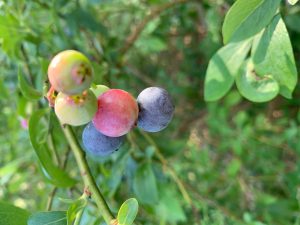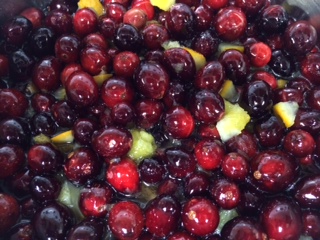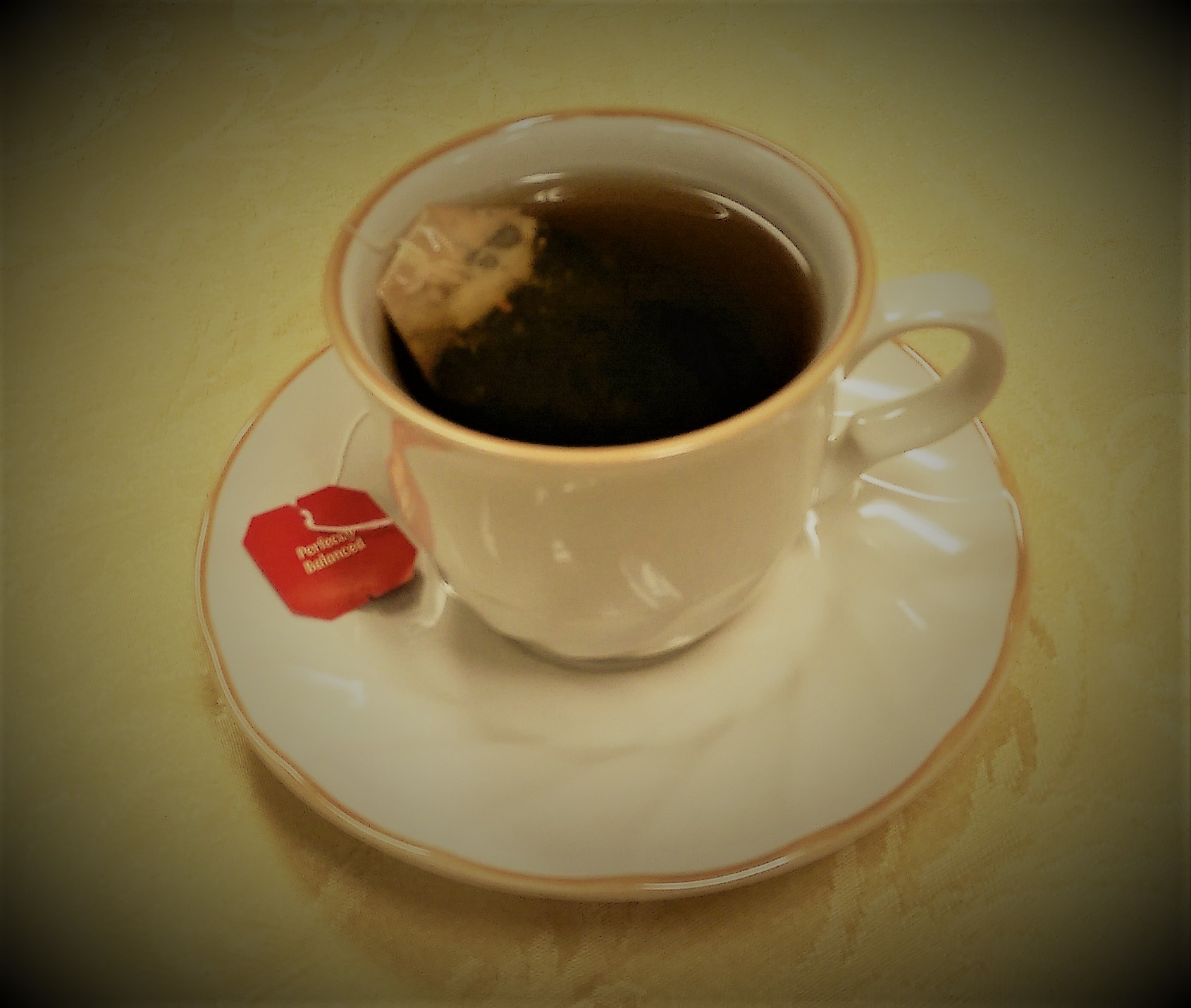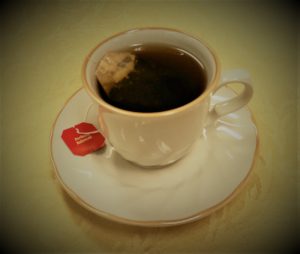
by Ginny Hinton | Jun 4, 2019
America’s favorite superfood is ripe in the Florida Panhandle! Well, it may not actually be everyone’s favorite, but it’s definitely a tasty superfood. Of course, I’m talking about the blueberry. If you love the sweet nutritious little blue fruit, now is the time to pick or purchase fresh from a local source.

Blueberries: Spectacular, Summer, Superfood
Photo source: Ginny Hinton
When it comes to antioxidants, blueberries are king. Antioxidants help protect our bodies from oxidative stress, which is linked to many diseases including arthritis, heart disease, stroke, and high blood pressure. They also help strengthen our immune system. Blueberries have one of the highest antioxidant levels of all common fruits and vegetables.
Blueberries are high in fiber (about 4 grams per serving), vitamin C and vitamin K. Of course, they’re also low in calories. Blueberries are available fresh in the Panhandle from late May into June.
When you’re picking blueberries, look for ones that are firm, dry, plump and smooth-skinned with a light greyish bloom. Stick to the deep blue ones for the sweetest flavor. Cover them and they’ll stay fresh in the refrigerator for up to ten days, or they can be easily frozen. Put them in a single layer on a baking sheet or cookie tray and freeze, then store them in airtight, resealable plastic bags. That way, they won’t stick together and you can use just the amount you need. Once you thaw them out, just be sure to use them within three days. Store blueberries unwashed and don’t rinse them until you’re ready to use them.
Don’t love to eat them plain? Nutritious, delicious blueberries are great in lots of dishes. For a quick breakfast or snack, add them to yogurt or cottage cheese and enjoy! Use them to flavor pancakes, waffles or muffins. Add them to a green salad for a sweet flavor burst. However you eat them, know that you’re doing a good thing for both your health and your taste buds.
Enjoy blueberries!

by Ginny Hinton | Nov 15, 2018

Cranberries cooking
It may seem like the year has barely started, but the holiday season is here! A little bit of planning now can go a long way toward avoiding that, “I blew my diet and need bigger jeans” feeling. Believe it or not, there are holiday treats that are nutritionally guilt-free, as long as you don’t go overboard. As with so many other things, moderation is the key! Below are some classic holiday favorite foods with hidden health benefits:
Sweet Potatoes: It’s no secret that sweet potatoes are good for you – but they may have even more benefits than you think! Sweet potatoes contain a lot of Vitamin A. That’s a great source of alpha and beta carotene that helps keep your eyes, bones and immune system in top shape. Sweet potatoes are also one of the top food sources of potassium, with almost twice as much of the mineral as you find in a banana. When choosing sweet potatoes, look for ones that are firm with tapered ends and a uniform shape and color. Miniature sweet potatoes are fun and pack the same great health benefits.
Cranberries: Bright red cranberries are a little too tart to eat alone but they add a beautiful festive touch to any holiday table. With only 45 calories per cup plus a healthy dose of Vitamin C and fiber, they’re a winner all the way around. Cranberries also have more disease-fighting antioxidants than almost every other fruit and vegetable. Buy cranberries fresh in the fall and winter and use them soon, as they don’t last long. Store them in a tightly sealed bag in your refrigerator to keep them fresh longer.
Nuts: Yes, they’re high in calories – and fat – but nuts are also loaded with vitamins and minerals. Eating a handful of nuts a few times a week may lower your risk of heart disease. Nuts are full of antioxidants, energy and protein. Think of nuts, in moderation, as a Christmas gift for your body!
Cocoa: What better way to begin – or end – the day than a steaming hot cup of chocolate? Knowing the health benefits of cocoa give us even more reason to love it. Remember those healthful antioxidants? Dark chocolate is loaded with them. In fact, if you choose dark chocolate with a high percent of cocoa solids, you may help lower your blood pressure, improve your blood vessel health and control your cholesterol. So, give in to those chocolate cravings – in moderation, of course!
There are lots of ways to make healthier holiday dishes. Check with your local UF/IFAS Extension Office for delicious recipe ideas that won’t break your budget or your waistline.

by Ginny Hinton | Apr 26, 2018
 As a child passenger safety technician/instructor for the past twenty years, I am always amazed at how quickly technology changes in the field. Both car seat and vehicle manufacturers are constantly testing innovations, making it difficult to know exactly how to properly use a car seat. One innovation that tends to give caregivers problems is the tether. Tethers are now a standard feature on every car seat and they are meant to be used with either the seatbelt or the LATCH (Lower Anchors and Tethers for Children) system. Tether anchors are required in passenger vehicles made after 2001.
As a child passenger safety technician/instructor for the past twenty years, I am always amazed at how quickly technology changes in the field. Both car seat and vehicle manufacturers are constantly testing innovations, making it difficult to know exactly how to properly use a car seat. One innovation that tends to give caregivers problems is the tether. Tethers are now a standard feature on every car seat and they are meant to be used with either the seatbelt or the LATCH (Lower Anchors and Tethers for Children) system. Tether anchors are required in passenger vehicles made after 2001.
For most car seats, tethers are not meant to be used rear-facing. A rear-facing seat is designed to dip and rebound in a frontal crash, cradling and protecting its young passenger. It doesn’t require a tether to do its job correctly. Forward-facing seats are a different story and tethers make them safer by allowing less head movement and stress on the spinal cord during a crash. Especially in a frontal crash, a tether can prevent serious head and neck injury by securing the top of the car seat and preventing several inches of forward head movement.
A tether is a strap of webbing with a hook at the end. Tethers connect the top of the car seat to the vehicle. They should be used for every forward-facing car seat installation, regardless of whether LATCH or a seatbelt is used to secure the seat itself. Most tethers need to be tightened only enough to remove slack. The manual that comes with each car seat offers important information on how to attach and tighten the tether properly.
If you have any questions about car seats, ask a certified child passenger safety technician in your area. You can find one near you at http://cert.safekids.org/

by Ginny Hinton | Feb 20, 2018
 When there’s a chill in the air, nothing sounds better than a hot cup of coffee or tea. But what are the health benefits and risks of these popular beverages? The answer may be much easier to swallow than you think.
When there’s a chill in the air, nothing sounds better than a hot cup of coffee or tea. But what are the health benefits and risks of these popular beverages? The answer may be much easier to swallow than you think.
Coffee
Americans consume over 400 billion cups of coffee every year. The drink has been blamed for everything from increased heart rate to insomnia – and those may be valid complaints, especially for heavy coffee drinkers. Recent studies give a brighter picture for those who drink a moderate amount. Black coffee has no calories or fat. The caffeine in coffee enhances mood and performance by blocking neurotransmitters that slow brain activity and by affecting other neurotransmitters (i.e. serotonin) that affect mood. In fact, 14 studies with healthy, rested subjects showed improved alertness, short-term recall and reaction time. In addition, coffee contains healthful antioxidants which may lower the risk of stroke and of heart disease in females. Moderate daily intake also helps keep the body hydrated. So, how much is too much? Because caffeine amounts vary among coffees, a maximum of 1/3 to 4 cups per day is recommended, depending on your java of choice.
Tea
On any given day, over 158 million Americans drink tea. There are three main varieties: black, green and oolong, and benefits depend on the type of tea. All tea is full of antioxidants, and the strongest evidence for health benefits is on the side of heart health. Black tea may protect against Type 2 Diabetes and there is some evidence for lowered heart attack and stroke risk. Green tea is a traditional Chinese remedy for headache and depression. It may also help with heart health by lowering cholesterol. Unfortunately, there is no direct evidence for tea being helpful with weight loss. Since typical caffeine levels for tea are less than half that of coffee (20-90 mg compared to 50-120 mg), the recommended maximum range of intake is 1 to 8 cups per day.
That’s the scoop! Enjoy your coffee and tea in moderation, limit added cream or sugar, and you’ll be treating your body well.
References:
Soong, J. (2011). What Counts as Water? Stay Hydrated and Healthy. http://www.webmd.com/parenting/features/healthy-beverages
Caruso, L., Shelnutt, K., Kauwell, G. (August 2014). Hydration Myths. http://edis.ifas.ufl.edu/fy1409.
Ruxton, C. (February 2008). The impact of caffeine on mood, cognitive function, performance and hydration: a review of benefits and risks. Nutrition Bulletin. 33(1): 15-25 http://onlinelibrary.wiley.com/doi/10.1111/j.1467-3010.2007.00665.x/full
Cochran, N. (January 2017). The Health Benefits of Tea. http://www.eatright.org/resource/health/wellness/preventing-illness/the-health-benefits-of-tea
by Ginny Hinton | Aug 18, 2017

With kids back in school, moms face a set of challenges that somehow seem new every year. One of those challenges is what to feed kiddos who race in the door hungry after a long day in the classroom. As a savvy mom, you know that snacks can help your kids meet their nutritional needs – as long as you pick the right ones. That’s where it can get a bit tricky because in addition to being healthful, the snacks need to be loaded with kid appeal plus be quick and easy to grab. Try some of the following ideas from the different food groups to create a snack that will give your kids calories (energy), meet their nutritional needs, and taste great as well!
• Banana Tortilla Treat – Grab a whole wheat tortilla, spread with peanut butter and sprinkle with low-fat granola. Put a peeled banana on top and roll the tortilla.
• Combo-licious – Top a scoop of cottage cheese with canned fruit. Choose peaches, pears, mango, pineapple or fruit cocktail.
• Wrap It – Spread fresh hummus on a whole wheat tortilla. Add thinly sliced carrots, zucchini, cucumber, or whatever veggie your kids prefer. Roll it up and go!
Feeling rushed in the afternoons? Plan ahead and create a healthy snack shelf at eye level in your pantry and in your refrigerator for kids to grab and go. You might try the following:
• String cheese and a small can of fruit.
• Fat free or 1% flavored milk (chocolate or strawberry)
• Pre-cut raw veggies (celery sticks, baby carrots, cucumber slices) in zipped baggies beside low-fat yogurt dip, cottage cheese or hummus.
• Snack-sized applesauce
• Trail mix with nuts and dried fruit
• Flavored rice cakes with peanut butter to spread
• Microwave popcorn
• Whole-grain crackers on the shelf and sliced cheese in the ‘fridge
With just a little planning, you can avoid snack-time stress and help your kids learn healthy eating habits at the same time.
For more ideas, check out these snack tips for parents. 10 Choose My Plate Snack Tips








